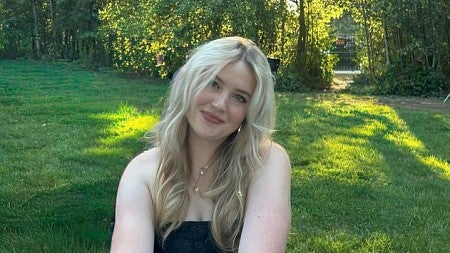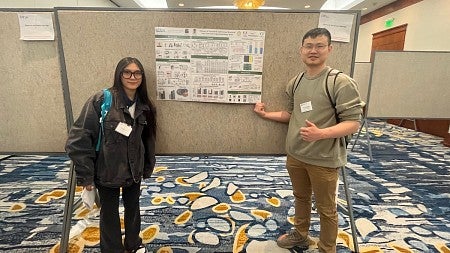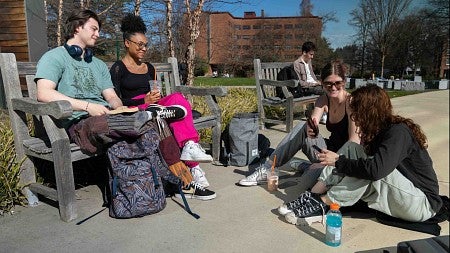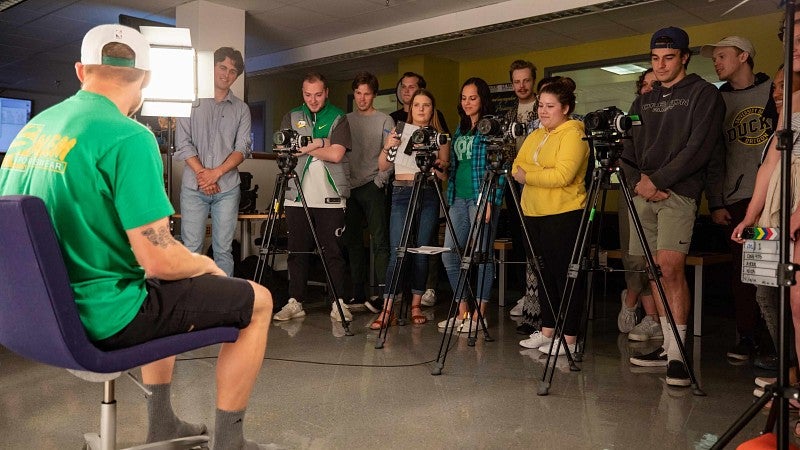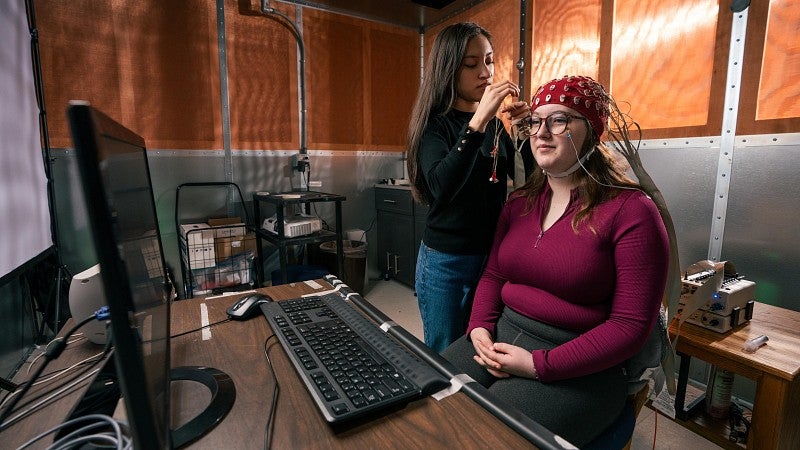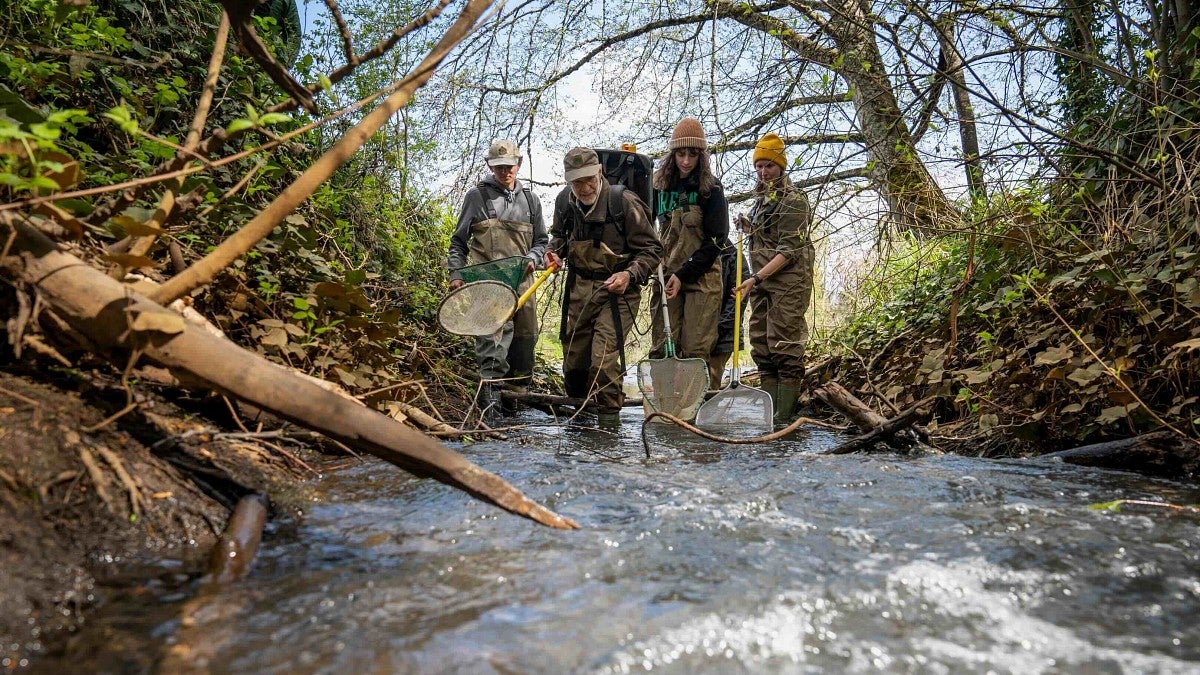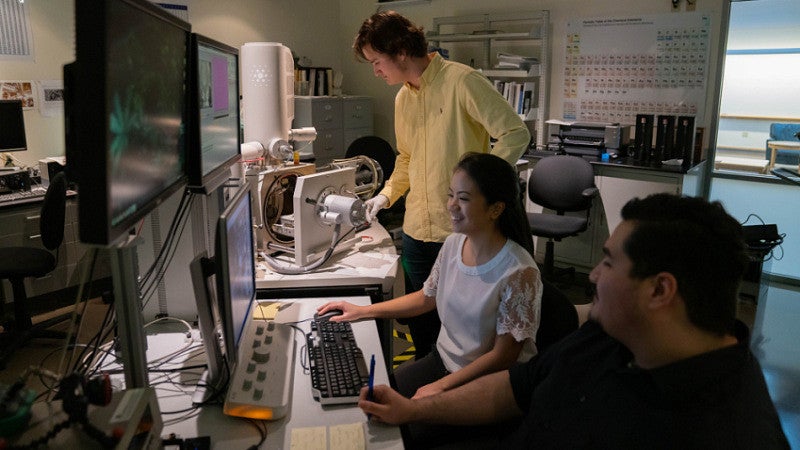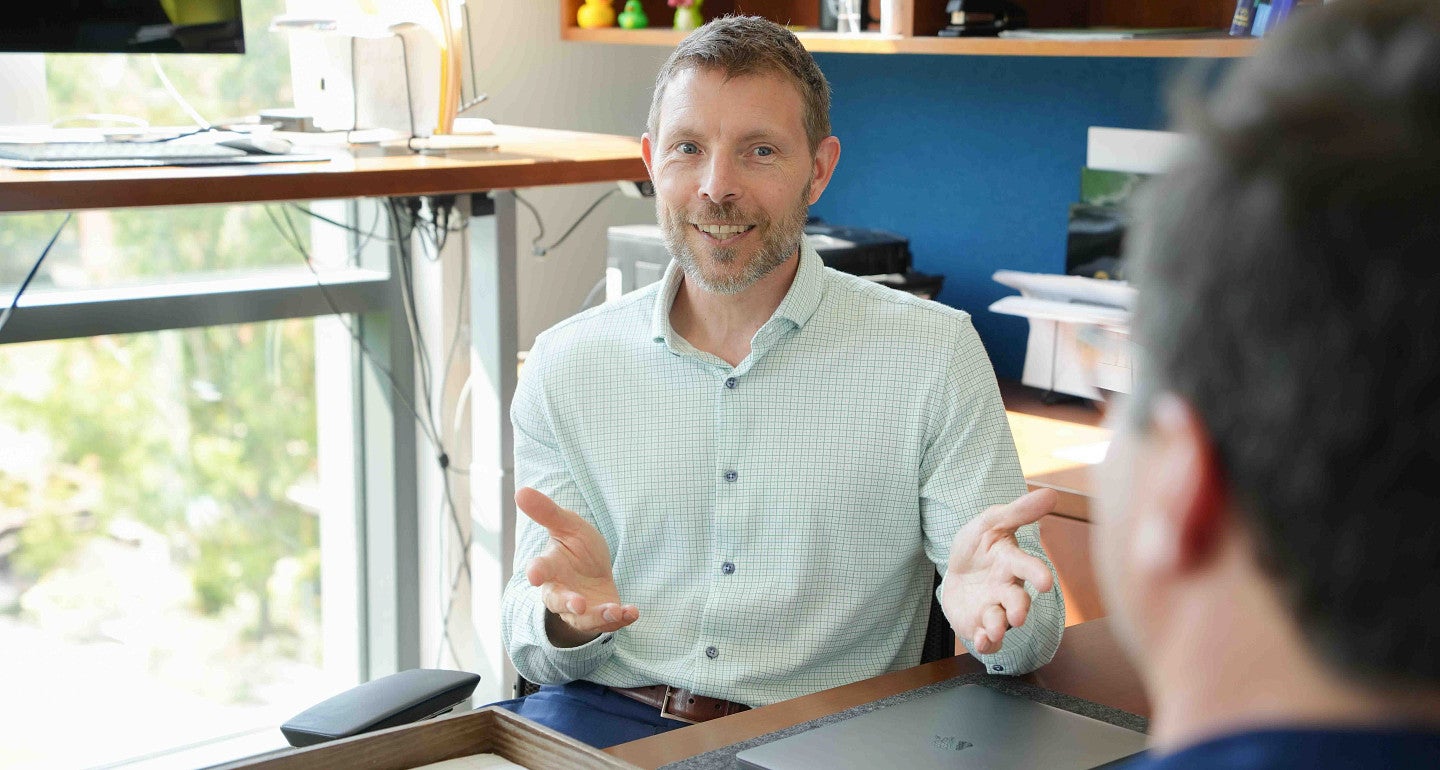
A Roadmap for the College of Arts and Sciences
As many look to the start of a new year, the College of Arts and Sciences looks forward to the next five years with its new strategic plan. Based on feedback and support from the CAS community — including alumni, campus leaders, faculty, staff, and undergrad and graduate students — the plan is a roadmap to guide the college over the next several years.
“The success of this strategy doesn't depend on a few leaders," said Tykeson Dean of Arts and Sciences Chris Poulsen. "It depends on all of us. And whether a community member is teaching, doing research, managing facilities, doing communications, keeping our administrative and operational infrastructure moving forward, all that work advances our mission and supports our students and academic objective.”
News from CAS
All news »
We Love Our Supporters
Gifts to the College of Arts and Sciences can help our students make the most of their college careers. To do this, CAS needs your support. Your contributions help us ensure that teaching, research, advising, mentoring, and support services are fully available to every student. Thank you!
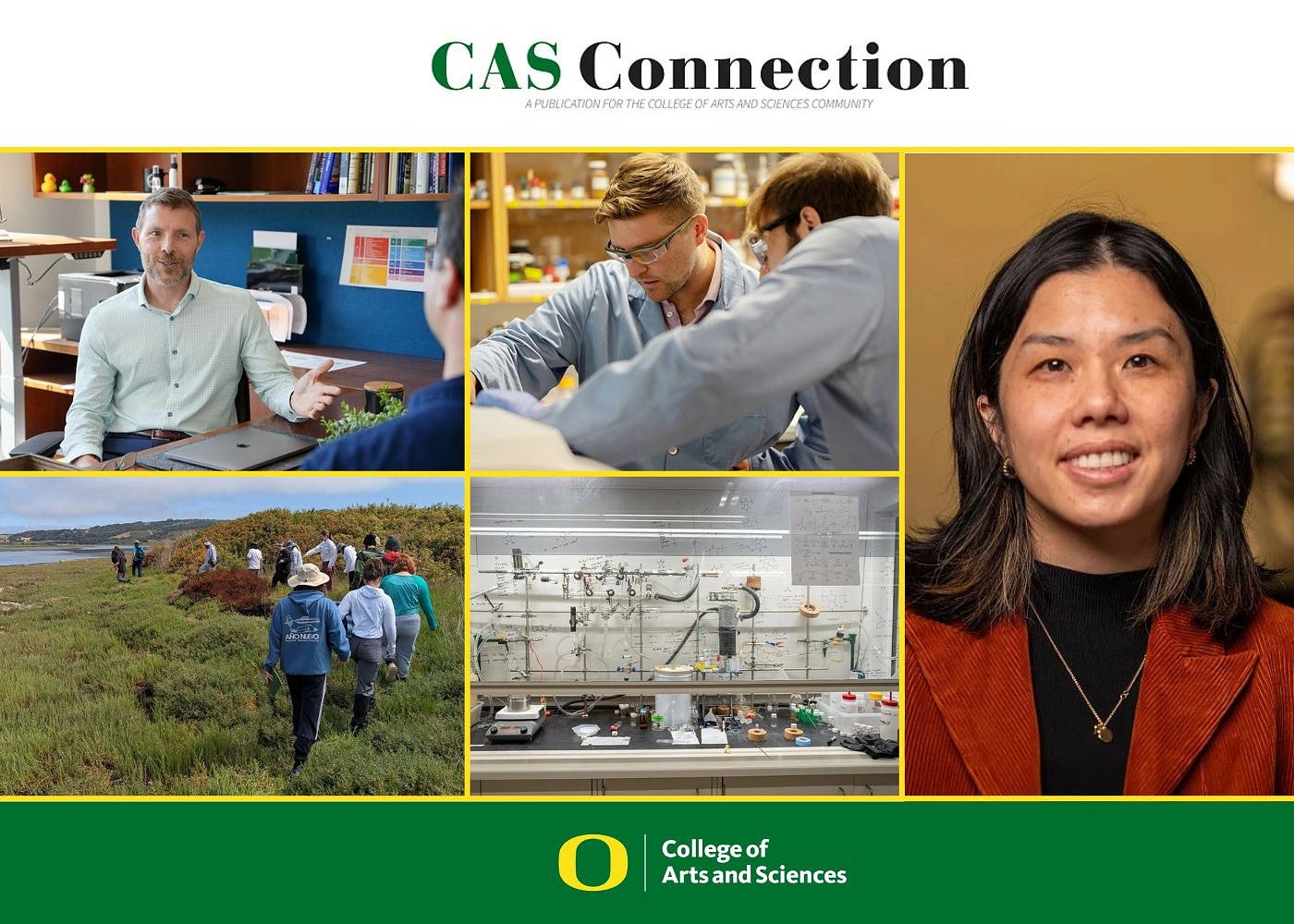
What’s Happening in CAS?
The future is bright for the College of Arts and Sciences. Tykeson Dean of Arts and Sciences Dean Chris Poulsen discusses the college's new five-year strategy, a plan that is ultimately focused on students. And that's because students are at the heart of everything the college does, Poulsen said.
As CAS looks to the future, see what the college is doing now in the December issue of CAS Connection: researchers in campus labs adding sustainable measures to their day-to-day operations, an anthropology professor's summer course inspiring students to rethink archeology methods, a cinema studies professor's film project—and more.
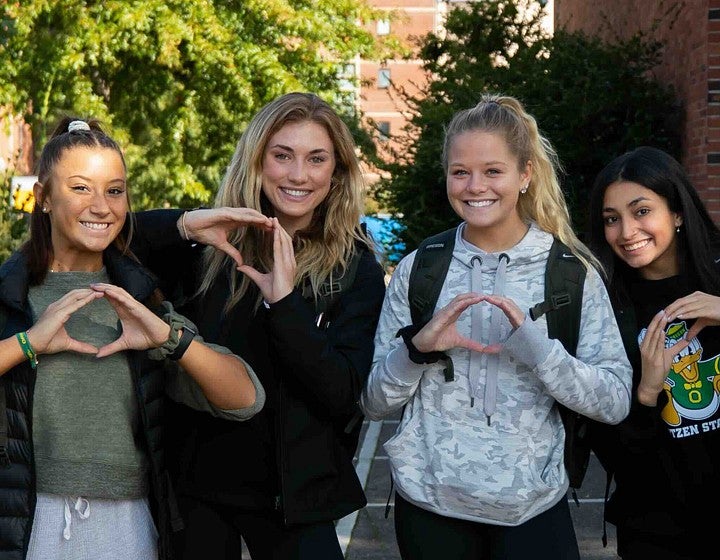
Undergraduate Studies
Wherever your academic goals eventually take you at the UO, all Ducks begin their journey with foundational courses in CAS. More than 60 percent of students go on to pursue a major in a CAS department or program. With more than 50 departments and programs, there’s an intellectual home for almost any interest, talent, or career aspiration.
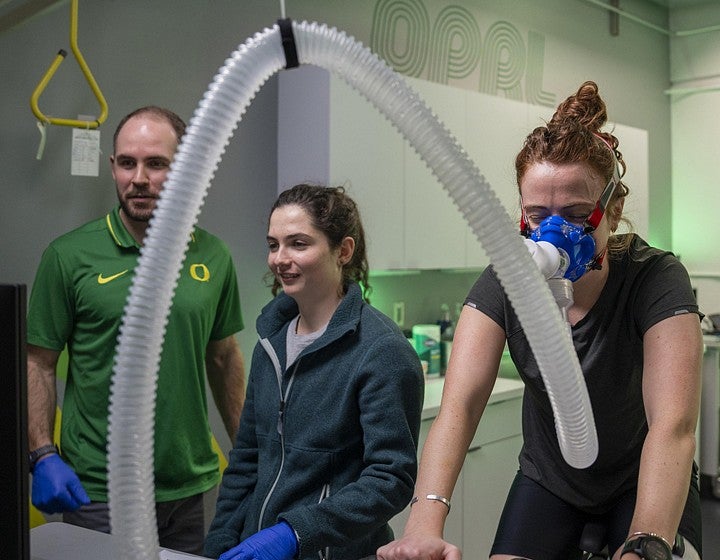
Graduate Studies
The College of Arts and Sciences offers more than 30 master's programs and more than 20 doctoral programs across a diverse range of disciplines. Both as contributors to research teams and through their own scholarship and teaching, our CAS graduate students are indispensable to the vitality of the UO academic mission.
Student Support Services
We provide our students with a variety of resources to help you thrive inside and outside the classroom. Through Tykeson Advising, we provide comprehensive academic and career advising from the start of your journey at the University of Oregon. Learn about career preparation and get assistance in selecting the very best classes. Connect with labs, libraries, IT and tutoring. Find your community on campus.
World-Class Faculty
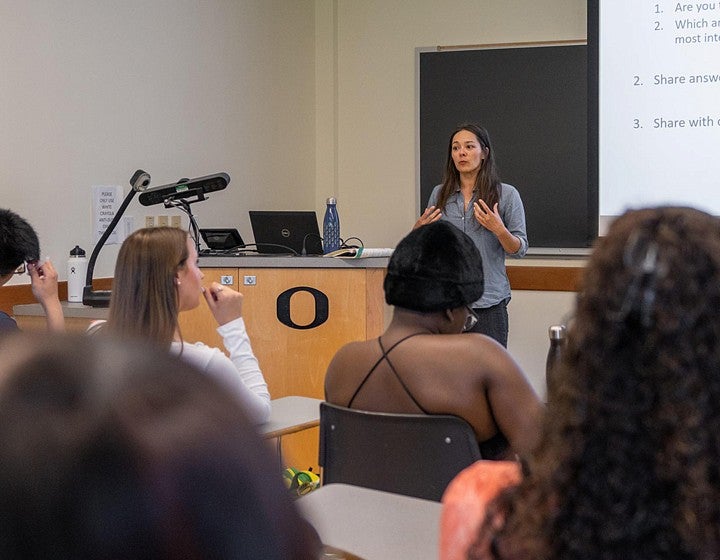
The College of Arts and Sciences faculty members are a driving force of the high-output, high-impact research activity that has earned the UO membership in the prestigious Association of American Universities (AAU). Our world-class faculty members are inspiring teachers.
Among them are five members of the American Academy of Arts and Sciences, four members of the National Academy of Sciences. They are committed to helping students discover their academic passion. Every day, they work to expand students’ intellectual horizons, preparing them for life after college with real-world knowledge and skills.
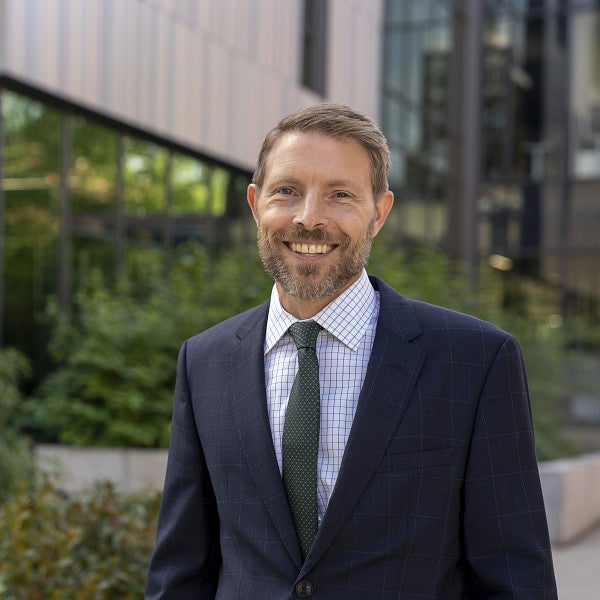
Meet our Dean
In the College of Arts and Sciences (CAS), we are committed to excellence in research and teaching, student success, and diversity, equity, and belonging.
A liberal arts education—one that offers a breadth of intellectual approaches and perspectives and depth in a major discipline—is the foundation to a purposeful life as a life-long learner, engaged citizen, and leader. The skills you will learn here—from written and verbal communication to analytical and quantitative reasoning, to compassion and understanding—are those that employers seek and will open the door to a wealth of opportunities.
You will find more than 50 majors and a multitude of minors within CAS, and seemingly endless opportunities for personal exploration and discovery. Whether you are an incoming first-year student, a grad student or a transfer student, you can map an exciting future and be part of a fun, warm, engaged liberal arts community here. Come join us. And go Ducks!
The College of Arts and Sciences includes:
Happening at CAS
10:00–11:00 a.m.
Please join us Tuesday mornings for a free cup of coffee, pastries, and conversation with your history department community! We’re excited to continue this tradition for our history undergraduate and graduate students, faculty, and staff. We hope to see you there!
4:00–6:00 p.m.
Kate Huber (PhD in English, UO ’22) returns to celebrate her new book, out January ‘26 with UVA Press’s celebrated series, Under the Signs of Nature. Huber is Assistant Professor of Digital Art, Ecology, and Communication, Department of Culture Studies, at Tilburg University, Netherlands.
Sponsored by the Department of English, the Oregon Humanities Center, the Center for Environmental Futures, Moore Professorship, and the Program in Environmental Studies
noon
Poetry is the expression of creativity and mastery of a language. No matter what stage of language learning one is at, to engage in poetic composition will aid them on their journey. In this talk, Dr. Jordan Douglas-Tavani (he/they | Tlingit) presents on the fundamentals of poetry—paying special attention to the considerations necessary for poetic composition in endangered and reawakening Indigenous languages. The presentation will also include a poetry reading.
7:00 p.m.
Please join the Department of History for the January pub lecture. Professor Charise Cheney will discuss "Blacks against Brown: The Intra-racial Struggle over Segregated Schools in Topeka, Kansas."
Free and open to everyone!
The UO Department of History presents a series of talks with scholars about history, from the local to the global. Join us for stories, food, and conversation in a casual setting!


